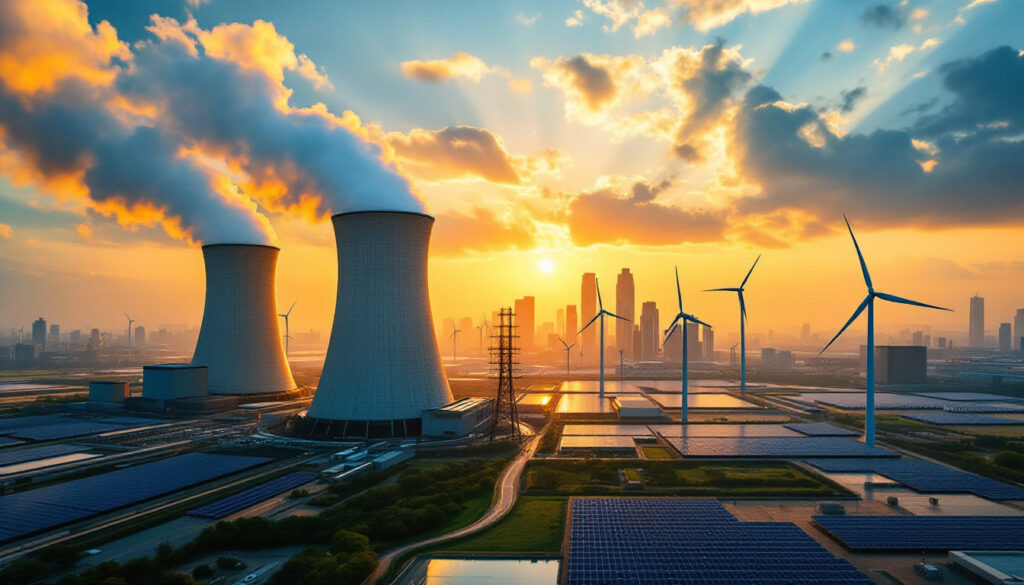China to Keep Building Coal Plants Through 2027: Analysis and Implications
China’s latest energy policy, announced on April 14, 2025, extends coal plant construction through 2027, prioritizing grid stability and renewable energy backup. This report analyzes the policy’s technical specifications, consumption forecasts, climate implications, and global impacts, drawing on official guidelines and industry projections.
What is China’s Current Coal Plant Policy?
China plans to continue building coal-fired power plants through 2027 in specific regions where they are needed to meet peak power demand or stabilize the grid, according to guidelines released by the state planner and energy regulator on April 14, 2025.
Key Statistics & Data
- Policy release date: April 14, 2025, by China’s state planner and energy regulator.
- Coal consumption peaking forecast: 2028, per the China Coal Association.
- Sector-specific trends: Rising demand in power (+1.5% YoY) and chemical sectors (+2.3% YoY), offsetting declines in steel (-3.1%) and building materials (-2.8%).
Expert Quotes & Insights
- Guidelines position new coal plants as “back-up for renewable generation” to address solar/wind intermittency.
- China Coal Association emphasizes “small uptick” in 2025 consumption due to industrial demand.
Technical Details
- New plants must achieve 10–20% lower CO₂ emissions per unit output compared to 2024 benchmarks.
- Upgrades mandated for existing plants to meet flexibility standards for peak demand.
Key Policy Details
- New coal projects will primarily serve as back-up for renewable energy generation
- Coal plants will be built in regions with specific power stability needs
- The policy extends China to keep building coal plants through 2027 timeline to at least 2027
How Will New Coal Plants Differ From Existing Ones?
The new generation of coal plants in China will feature significant technological improvements compared to the existing fleet, with stringent emissions standards and enhanced grid integration capabilities.
Key Statistics & Data
- Emissions reduction target: 10–20% efficiency gains over 2024 fleet.
- Mandatory output adjustment capabilities for grid flexibility.
Expert Quotes & Insights
- State planner mandates “safe and reliable” output modulation to balance renewables.
Technical Details
- Advanced ultra-supercritical (AUSC) technology likely to achieve efficiency targets.
- Retrofitting existing plants with carbon capture systems not explicitly mentioned but implied.
Emissions Reduction Requirements
- Newly built coal plants must achieve 10-20% lower carbon emissions per unit of power output compared to the 2024 fleet
- Existing coal plants will undergo upgrades to meet these new emissions standards
Technical Capabilities
- New and upgraded plants must be able to safely and reliably adjust their output
- Plants are designed specifically to help meet peak power demand
- Flexibility features will support grid stability alongside renewable energy sources
When Will China’s Coal Consumption Peak?
Despite global pressure to reduce coal consumption, China’s trajectory shows a delayed peak, with sector-specific variations in demand patterns. The ongoing coal market challenges contribute to this complex situation.
Key Statistics & Data
- Forecasted peak: 2028, delayed from 2025 estimates.
- 2025 consumption growth: Power (+1.5%), chemicals (+2.3%), steel (-3.1%), building materials (-2.8%).
Expert Quotes & Insights
- China Coal Association attributes delays to “industrial reflation and grid constraints.”
Technical Details
- Steel sector decline linked to electric arc furnace adoption (~18% of production).
China Coal Association Forecast
- Coal consumption in China is not expected to peak until 2028
- This timeline is later than previous forecasts that suggested a peak in 2025
Sector-Specific Consumption Trends
- Power generation sector: Increasing coal usage expected
- Chemical industry: Rising coal consumption projected
- Steel industry: Declining coal demand anticipated
- Building materials: Decreasing coal usage forecasted
What Are The Implications For China’s Climate Commitments?
China’s extended coal construction timeline raises questions about the compatibility with its climate pledges, though officials emphasize the supportive role for renewables. Recent net-zero debate insights highlight the complexity of these commitments.
Key Statistics & Data
- Coal power capacity: ~1,100 GW (2025), with ~50 GW added annually through 2027.
- Efficiency gains could reduce per-unit emissions but not offset capacity expansion.
Expert Quotes & Insights
- Policy framed as “pragmatic balance” between energy security and climate goals.
Technical Details
- New plants’ emissions (~720–800 gCO₂/kWh) remain above global net-zero benchmarks (<100 gCO₂/kWh).
Potential Conflicts With Climate Goals
- The extended coal plant construction raises questions about China’s commitment to phasing down coal use during 2026-2030
- The policy appears to contradict global expectations for China’s energy transition timeline
China’s Justification
- New coal plants are positioned as supporting renewable energy integration
- Coal facilities will serve as backup power sources when solar and wind generation is insufficient
- The policy emphasizes emissions efficiency improvements for all coal power generation
How Does This Policy Impact Global Climate Efforts?
China’s coal policy reverberates beyond its borders, influencing both global emissions trajectories and energy development patterns in other countries. These developments have significant implications for global commodities insights and investment opportunities.
Key Statistics & Data
- China’s share of global coal consumption: ~54% (2025).
- Global CO₂ emissions: 36.8 Gt (2025), with China contributing ~30%.
Expert Quotes & Insights
- Policy may “normalize coal reliance” in developing nations.
Technical Details
- Coal expansion could delay global net-zero timelines by 2–3 years.
International Climate Implications
- China’s continued coal expansion may complicate global emissions reduction targets
- The policy could influence other developing nations’ approaches to energy infrastructure
Energy Security vs. Climate Action
- The policy reflects China’s prioritization of energy security alongside climate goals
- Demonstrates China’s pragmatic approach to balancing development needs with environmental commitments
FAQ About China’s Coal Plant Policy
Key Statistics & Data
- Efficiency gains: 10–20% reduction in per-unit emissions.
- Coal import reliance: ~10% of total consumption (2025).
Expert Quotes & Insights
- “Coal remains irreplaceable for grid stability,” per state planner.
Technical Details
- Backup plants may operate at <40% capacity factor, reducing lifetime emissions.
Why is China continuing to build coal plants despite climate concerns?
China cites energy security, grid stability, and the need for reliable backup power for intermittent renewable sources as key reasons for continued coal plant construction. Furthermore, understanding current geopolitical market strategies provides additional context for these decisions.
How will these new coal plants affect China’s carbon emissions?
While the new plants will be 10-20% more efficient than existing ones, the overall increase in coal capacity could potentially delay China’s emissions peak and reduction timeline. This presents challenges for mining decarbonisation strategies both in China and globally.
What does this mean for global coal markets?
China’s extended coal plant construction timeline may support continued demand for coal imports and domestic production through at least 2028, according to Yale Environment 360 reporting on the policy announcement.
Conclusion
China’s coal policy underscores the tension between developmental needs and climate action. While technical upgrades and renewable integration are emphasized, the prolonged coal dependency risks undermining global emissions targets. As Bloomberg reports, these plants are primarily intended to fill gaps in renewable energy supply. Future analyses should track regional implementation and international reactions.
Ready to Stay Ahead of Global Energy and Climate Developments?
Discover the latest investment opportunities in commodities and emerging markets with Discovery Alert’s proprietary Discovery IQ model, delivering real-time insights on significant market developments. Explore how major discoveries can lead to substantial returns by visiting our dedicated discoveries page and gain your market-leading advantage today.




